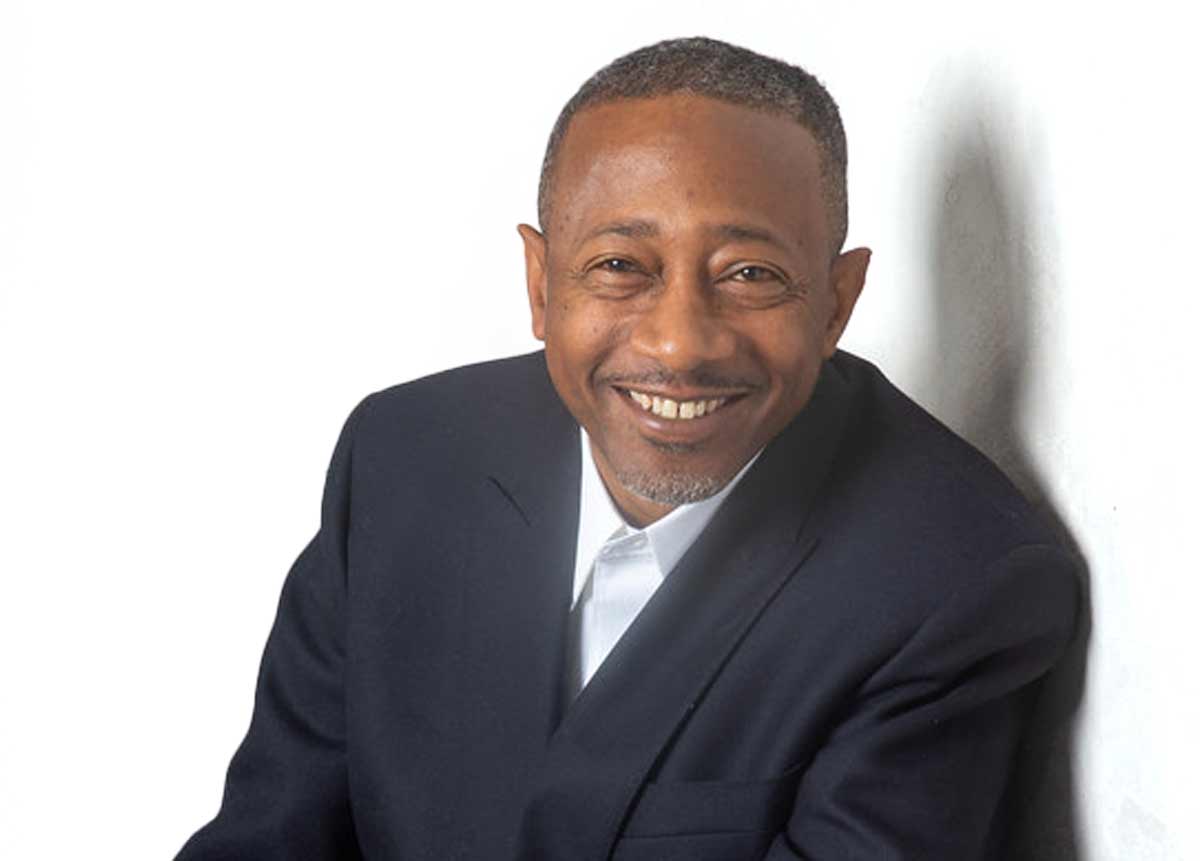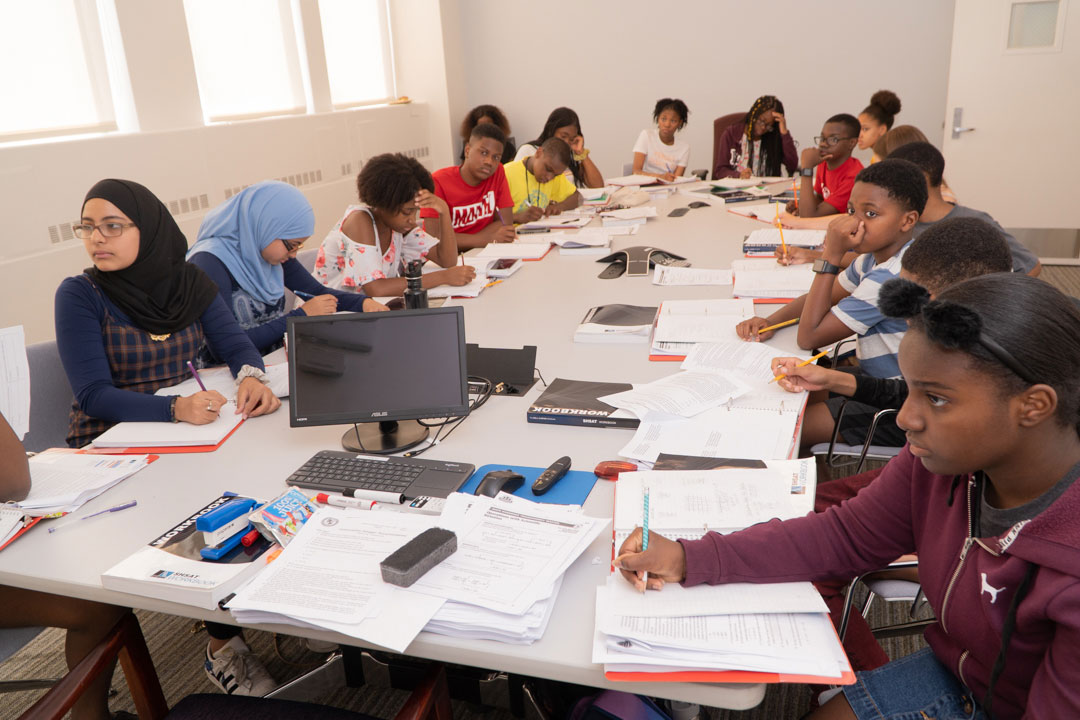Interview
William Suggs: A Guiding Light in the Energy Industry

By Roxanne Dupiton
There are people in this world destined to be a guiding light for generations to come. To forge paths into worlds marginalized young men and women never even knew existed. It’s a feat in itself to make space in a field your community knows very little about, but to then go on and create programs that allow the youth of your community easier access is exceptional. William Suggs has honored his power by taking on the responsibility of educating young men and women on the lucrative and fulfilling opportunities in the energy sector. As an energy professional with over 30 years of experience, he and his colleagues started the Summer Energy Academy. The academy was founded with the purpose of introducing the youth to the careers readily available to them when they study STEM (Science Technology Engineering and Mathematics). In a matter of six weeks a young scientist can be born, and his or her perspective changed forever. The knowledge gained is invaluable. With knowledge comes power, the power to go on and provide a better quality of life for you and your family, and to play an esteemed role in society. Through a collaboration with Brookhaven Lab, the American Association of Blacks in Energy, and Con Edison, the future looks bright for Suggs’ mission. The industrious trio have come together to provide students a 21 week course on sustainable energy, that counts toward high school credits. With a plethora of scholarships available, and plans with the Department of Education to pilot a STEM program throughout the five boroughs; a career that may have seemed challenging and unaccessible, can transform into an avenue for disadvantaged youths to gain equal footing with their more privileged counterparts. Not all heroes wear capes, some simply extend a hand from their position of influence and pull the willing up. Industry Rules sits with the cape-less hero to learn more about how he’s extending his hand.
RA: What do you think made you gravitate toward working in the energy sector?
WS: When I was a young man I liked working with my hands. I attended a vocational high school, which gave me insight on hands on experience. I joined Con Edison in 1987 and started in Steam Distribution which provided high pressure steam to all the commercial buildings throughout the island of Manhattan. It exposed me to another world. I never knew about the electric business, business of steam, or the gas business. Working in steam as a young man, 18 and 19 years of age, it gave me some insight on how the energy is moved and delivered around a whole system. It also gave me pride in knowing that I play a part in keeping the city up and running. On the way home, looking at the lights and all the buildings and knowing that they are warm from the high pressure steam and are also cool from that same steam in the summertime. When millions of people are going to work everyday I made a change and got paid while doing it. I then, moved around to different organizations in the company. I worked in central engineering for a little bit, then design layouts and ultimately gas operations for a number of years. While working in the energy sector, I ended up joining the American Association of Blacks in Energy. It allowed me to shift from just going to work every day and doing a great job and getting paid, to seeing how we as energy professionals can really make a change in society within the African American community. A lot of young African American people and other people of color are not exposed to the energy sector at all. I was fortunate enough to be exposed to this career by a lady named Ms. Ann Davis, who passed in 2021. She brought me into the company, and it’s so funny she didn’t believe I graduated high school. She wanted to see my actual high school diploma, and one thing I always remember is her telling me to make her proud.
RA: You are the President of the SEA (Summer Energy Academy) A program that introduces our youth to the many possibilities in the energy industry. How did the idea for the program come about?
WS: I realized our young people needed to get some exposure to the energy sector before graduating high school. So a friend of mine who used to be a Dean at Polytech, which is now NYU Tandon School of Engineering, and a few other educators got together to help prepare our young people take on these careers in the energy sector. There were two young ladies, Tanzee Silver and Samantha Tulloch at the time, that were a part of Beverly Johnson’s program at Polytech downtown Brooklyn. They formed a curriculum targeted for Middle Schoolers. They’re learning math of course, but they’re also learning about the energy sector as a whole. The program now runs every summer in Bedford Academy high school in Bedford Stuyvesant and LIU Brooklyn. LIU Brooklyn Liberty Leadership asked us to bring a STEM component to their program, and we were able to do that also. That allowed us to not only have the high school component, but to also partner with a local college.
RA: What’s one thing in the SEA Program curriculum you would have loved to take as a young scholar?
WS: I would have loved to learn how to build houses and model homes. These students learn how to build homes efficiently, write reports on them and write up financial statements on how much energy the house is going to use. As a homeowner a lot of times we learn by trial and tribulations. A lot of African American communities infrastructure are in historical areas. These buildings are over 100 years old. The electric service, the gas pipes, and the water systems are older, and if you don’t know how to maintain your house, you’ll be wasting energy and spending a lot more money out of your pockets. For example, there are certain water systems that use to have lead pipes, who do you call to have this checked out? These are things that affect your quality of life. All this comes into play around understanding STEM (Science Technology Engineering and Math).
RA: It’s very apparent that you take pleasure in giving back and paving it forward. How has being a member of the AABE (American Association of Blacks in Energy) facilitated that mission?
WS: Being a member of AABE, you hear different issues and different things that the founders went through 45 years ago. We have made a lot of traction and done a lot of great work, but there is still a lot of work to be done. We actually form programs at the grass-root level. We not only give out scholarships every year to young people going to college and studying STEM; we also get corporate support from Con Edison to host the National Scholarship Conference. Besides nationally, we also have a partnership with Con Edison locally, to help us run these programs here in the New York City area. I came up with the idea around a tutoring program because my daughter went to Benjamin Banneker, which is one of the sister schools of Bedford Academy high school. Bedford Academy high school and Benjamin Banneker take a week to prepare their students for the SAT, but I’m not sure other city high schools do that. When I went to visit another high school, I noticed a young lady crying around graduation time. The reason she was crying is because she passed all her classes and had all of her credits, but failed the SATs and Regents exams. These are now requirements for graduating high school. I went back to the principals of Bedford Academy high school, with the idea of getting my team together and hiring college students to come into these schools and prepare these young people for their SATs and Regents Exam. We provide these college students a curriculum created by my team to abide by and these young people are then adequately prepared for their SATs and Regents.
RA: What do you see for the future of the energy sector and all the work you and AABE have been doing?
WS: Well, we’ve also created a Sustainable Energy course that gives students a more hands on approach. It’s a course where students can receive high school credits. It gives 11th and 12th graders exposure to a different field, which can give them an idea of where they want to go. If they don’t want to go to college, that’s fine. It’s also great if they do want to go to college for law or finance. This course will show them that these professions are in demand in the energy sector as well. If they’re going to study STEMS, they have the opportunity to receive scholarships from organizations like AABE and many others out there. It’s also very important to prepare these young individuals, who want to go right into working in the gas and electric business. They should have an idea of what exists out there. If they want to go into a local company at an entry level position, as a utility worker, without the exposure they’re not going to pass the test. Now, n the future, these young people are not just going to enter in as meter readers, or start by working in the janitorial business. They’re going to start inside the energy sector, where we really move electric, gas and steam; and provide service within the infrastructure of the city. The ultimate goal is to not just be end users and pay our electric and gas bills, but to also be the people who keep the system up and running while getting paid to do so.
RA: What was the most challenging parts of being an African American male working in the energy sector?
WS: When I first started out, the most challenging thing for me was learning to deal with different cultures. The dominating races that are in charge of most of these energy companies are from different cultural backgrounds than I’m from. That’s a huge barrier right there. In this culture, people throw that word diversity around pretty loosely. We have to really implement diversity, and allow different walks of life the opportunity to succeed. If these young people are never exposed to the energy and utility business and what it is about, whether it is Con Edison, National Grid or Verizon; they’re walking into these places and have to learn a system they aren’t prepared to learn. They also have to deal with people from different cultural backgrounds that sometimes automatically stereotype them. These were some of the barriers I encountered that I learned to navigate around.
RA: What has been the most rewarding?
WS: After 35 years in the energy industry, the most rewarding is seeing your family enjoy the benefits of your hard work. I love when young people who work in the energy company or the young people from the programs come up to me and I can see how far they’ve come. We have young people who graduated from the summer energy academy, and who’ve gone to college and become a nuclear engineer. These kids come back and are giving back also, they’ll come and work with me in the summertime and give back to the Summer Energy Academy.
Continued in part two next week.









